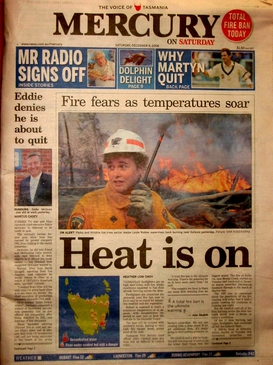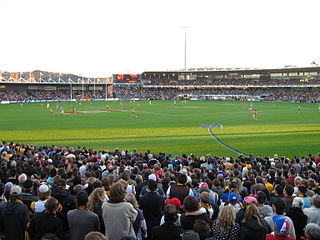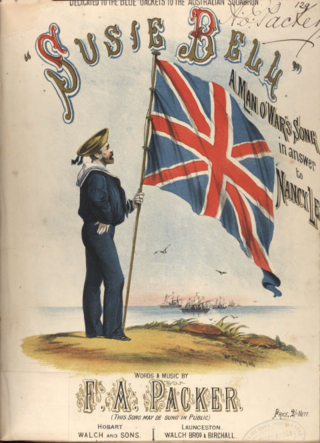
Hobart College is a government comprehensive senior secondary school located in Mount Nelson, a suburb of Hobart, Tasmania, Australia. Established in 1913 as Hobart High School, it was later renamed as Hobart Matriculation College in 1965, and subsequently renamed as Hobart College. The college caters for approximately 1,000 students in Years 11 and 12 and is administered by the Tasmanian Department of Education.
The mines of the West Coast of Tasmania have a rich historical heritage as well as an important mineralogical value in containing or having had found, specimens of rare and unusual minerals. Also, the various mining fields have important roles in the understanding of the mineralization of the Mount Read Volcanics, and the occurrence of economic minerals.

TheMercury is a daily newspaper, published in Hobart, Tasmania, Australia, by Davies Brothers Pty Ltd, a subsidiary of News Corp Australia, itself a subsidiary of News Corp. The weekend issues of the paper are called Mercury on Saturday and Sunday Tasmanian. The current editor of TheMercury is Craig Herbert.

Australian rules football in Tasmania, has been played since the late 1870s and draws the largest audience for a football code in the state.
Henry Elmes Lette was an Australian cricketer and politician. His middle name is frequently misreported as "Elms".
Terence Robert Cashion was an award-winning Australian rules footballer from Tasmania who played numerous representative matches for the state and also played for South Melbourne in the Victorian Football League (VFL).

George Bertrand Edwards was an Australian politician. He was a member of the Australian House of Representatives representing the Division of South Sydney for the Free Trade Party from 1901 to 1906 and the Division of North Sydney for the Liberal Party from 1910 until his death in 1911.

Zeehan railway station in Tasmania, was a major junction and railway yard for numerous different railway and tramway systems in western Tasmania in the town of Zeehan.
The rail transport in the island state of Tasmania, Australia has had many train accidents since its historic opening in 1871. The following is a list of train related accidents that have occurred on Tasmania's rail network.

Henry Hunter (1832–1892) was a prominent architect and civil servant in Tasmania and Queensland, Australia. He is best known for his work on churches. During his life was also at various times a state magistrate of Tasmania, a member of the Tasmanian State Board of Education, the Hobart Board of Health, a Commissioner for the New Norfolk Insane Asylum and President of the Queensland Institute of Architects.

St Andrew's Kirk, Launceston, is a Presbyterian church located on St John Street in Launceston, Tasmania, Australia, serving the Presbytery of Bass. It was the second Presbyterian church to be built in the city of Launceston following the Scotch National Church on Charles Street.
Brisbane Street is a street in Hobart, Tasmania. The street was named for Sir Thomas Makdougall Brisbane, the sixth Governor of New South Wales.

John Gardner was a Scots-born Presbyterian minister in Adelaide, South Australia, the first incumbent of Chalmers Free Church of Scotland, now Scots Church, North Terrace, Adelaide. He later served at Launceston, Tasmania and Queenscliff, Victoria.

Susie Bell was a popular nineteenth century nautical tune collected by Frederick Augustus Packer around the port at Hobart, in Tasmania. First published in 1882 London. The song is dedicated to the blue jacket sailors of the Australian Squadron, stationed in Australia. The lyrics are a rollicking Australian response to Nancy Lee written by Stephen Adams
Rev. William Henry Savigny MA was an Australian academic, born in England. His elder son, also named William Henry Savigny was a longtime master at Sydney Grammar School.

Francis Burgess (1793–1864) was an English barrister, the first police commissioner for Birmingham, England, and subsequently chief police magistrate of Van Diemen's Land, and served as a Member of the Van Diemen's Land Legislative Council.

The National Theatre is a historic former theatre in Launceston, Tasmania, Australia.

The Majestic Theatre is a historic former theatre and cinema in Launceston, Tasmania, Australia.

The Avalon Theatre is a historic former Temperance Hall, theatre and cinema in Hobart, Tasmania, Australia.
Alice Christina Irvine was an Australian domestic science teacher and author of the Central Cookery Book.

















